Choosing a Karcher robot vacuum cleaner
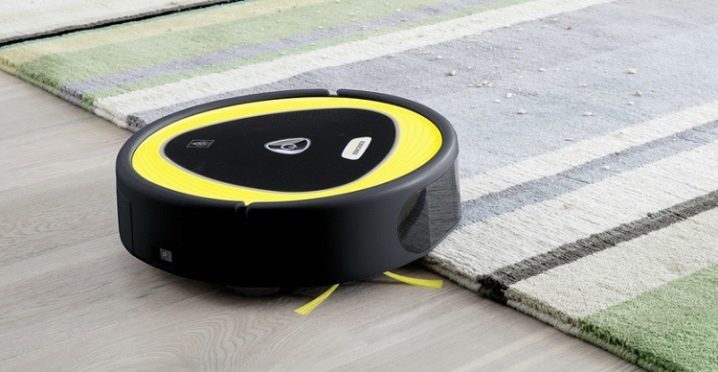
Nowadays, there are more and more devices designed to facilitate and even automate the difficult and time-consuming cleaning process. Therefore, it is worth considering the features of the choice and use of the Karcher robot vacuum cleaner, the advantages and disadvantages of such a solution, as well as the owners' reviews of such a technique.
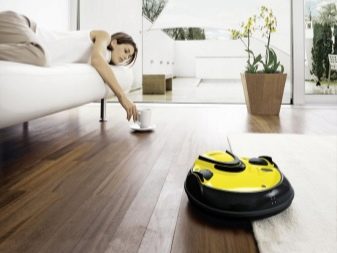
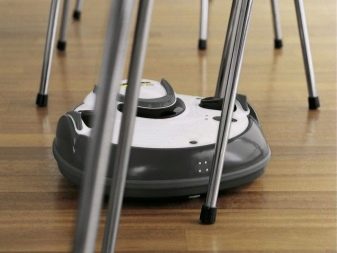
Advantages and disadvantages
Before you think about purchasing a Karcher robot vacuum cleaner, you should consider all the pros and cons of such a purchase. The main advantage of the robot vacuum cleaner is its complete autonomy. The owner just needs to monitor the level of its charge, choose the desired cleaning program and clean the dust collectors in time - the device will perform all the rest of the cleaning work on its own. Speaking about the products of the German company, it is worth noting such main advantages as:
- all models are equipped with both a suction function and a sweeping mode;
- the interface of the vacuum cleaner makes it possible to fine-tune the mode and duration of the scheduled cleaning;
- the entire range of German cleaning robots is equipped with an automatic garbage bag unloading system;
- navigation is carried out using infrared sensors, which reduces the risk of getting stuck or run over by owners and pets;
- devices are equipped with a height sensor, which makes them less likely to fall down stairs;
- bumpers made of rubber are located on the top cover, making the robot less likely to get stuck under furniture;
- sensors of the degree of pollution automatically switch the operating mode of the vacuum cleaner depending on how dirty the surface to be cleaned is;
- thanks to the use of durable plastic, the body of German vacuum cleaners wears out more slowly and is less likely to be destroyed from impacts;
- the spring-loaded wheel suspension allows the unit to move confidently over carpets, carpet products, linoleum, tiles, parquet and laminate.



Important! Karcher appliances are distinguished by almost complete autonomy, high reliability, confident navigation through the apartment without the risk of getting stuck in a corner or under a closet, quiet operation and the ability to choose the cleaning mode suitable for your apartment.
The main disadvantage of the equipment of the German concern can be called a rather high price, which is usually one and a half, or even two times higher than that of analogues produced by lesser-known brands. And this applies to both the robots themselves and accessories, spare parts and consumables (filters and dust bags).
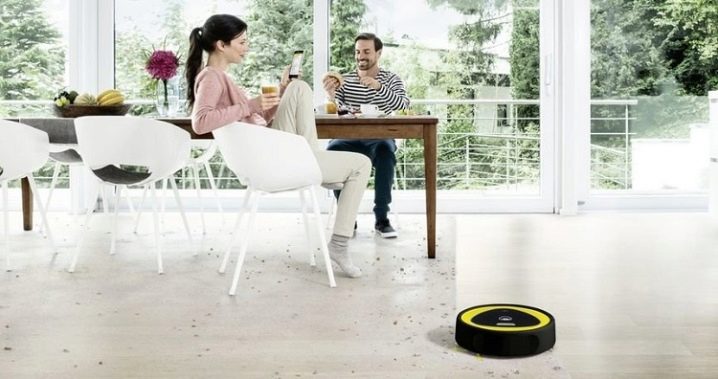
Varieties and models
Today the German concern offers customers 4 basic models of automated harvesting robots.
RC 3000
The RC 3000 is the simplest model available. It comes with a 1700 mAh battery, which is enough for 1 hour of battery life on a full charge. During this time, the device manages to clean a surface with an area of about 15 m². At the same time, the capacity of the receiving container of the robot is only 0.2 liters, when it is completely filled, the robot will also return to the base to clean it. This means that it will take 3 to 5 hours for a complete cleaning of a room with an area of about 50 m².
It takes 15 to 20 minutes to fully charge the battery. The diameter of this robot is 280 mm and its height is 105 mm. The mass of the device is about 2 kg. The power consumed from the electrical network by the charging station is only 0.6 kW. The volume of the bin installed on the base is 2 liters.The noise level does not exceed 54 dB (this is slightly louder than a conversation and quieter than a TV operating at an average sound level).
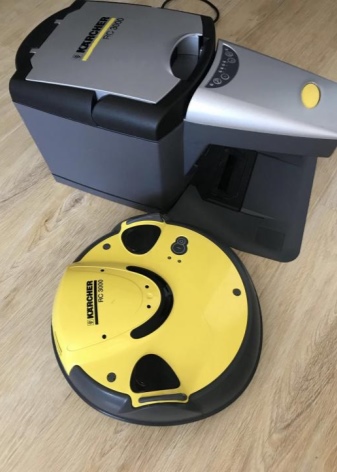

RC 4000
The RC 4000 differs from the previous model by the presence of cylindrical brushes, which almost doubles the cleaning speed.
The navigation system on this device is more perfect, so that it is less likely to find itself in "desperate situations" requiring the intervention of the owner.



RC 3
The RC 3 is a more modern model that can last 3 to 4 hours on a single charge. During this time, the device manages to clean up to 160 m² of the surface. The capacity of his bags has been increased to 0.35 liters. A double brush system is installed on board, which significantly increases the speed and quality of cleaning. There are also side brushes, which avoids the appearance of streaks of uncleaned dust. The control and monitoring system has been completely redesigned - in addition to IR sensors, laser scanners are installed here, due to which jams are almost completely eliminated.
Scheduling is also made easier. Now you can control the device not only from the base, but also using a mobile application that allows you to select the date and time of cleaning, as well as its duration. It became possible to draw up a map of the premises. The diameter is increased to 340 mm with a height of 96 mm and a weight of 3.6 kg. The main disadvantage of the RC3 model is its high noise level, which can reach 71 dB.


RC 3 Premium
The RC 3 Premium differs from the previous model in the extended scope of delivery, which includes additional side brushes and several replacement filters.



Design and principle of operation
Most of the robotic vacuum cleaners, both produced by the German concern and released by other companies, are arranged according to general design principles. Usually they are a rounded device with a diameter of 20 to 50 cm, which moves around the apartment on wheels. Rubber bumpers are usually placed around the body to protect the device from collisions with obstacles. Inside is an electric motor that drives the wheels, a suction compressor and brushes used in sweeping mode. The device is powered by a built-in miniature battery, which is usually nickel-metal hydride (Ni-MH) batteries. And also inside there is a dust collector, for which small bags are usually used. A filter system is installed between the suction inlet and the bags.
The movement of the device and the switching of cleaning modes are controlled by the navigation and control system, which consists of an on-board computer and a sensor system.


The following sensors must be installed on Karcher vacuum cleaners:
- IR sensors for navigation;
- height sensors;
- battery charge sensors;
- bag fullness sensors;
- pollution sensors.


Products manufactured by other companies can be completed with a different set of sensors. For example, for motion control of some models, built-in video cameras can be used, which are cheaper than IR sensors, but less reliable. Finally, there are indicators and buttons on the surface of the robot that allow you to control the device and get information about its state. Cleaning robots of all manufacturers are usually equipped with a "base" - a stationary parking station, which charges the vacuum cleaner's batteries and unloads garbage. And also at the bases, a more powerful computer is usually installed that controls the robot remotely, and an advanced control system that allows you to select cleaning modes. Some bases have the ability to connect to a mobile application, which greatly simplifies the management of the cleaning schedule.
Cleaning begins with scheduling and choosing modes. When the scheduled time comes, the robot leaves the station and begins to move around the room, sweeping debris with brushes and sucking it in. The movement can be carried out according to a predetermined program or chaotically, when the robot itself chooses the direction of movement within the room.After the end of the cleaning program, at a critical level of charge or when the bags are completely filled, the device returns to the parking station (Karcher vacuum cleaners find it using the infrared beam emanating from it), where the bags are cleaned (according to the principle of a vertical vacuum cleaner, sucking debris from the robot's container) and battery charge.
In free time from work, the vacuum cleaner is usually at the base.



How to choose?
If you want a miniature, reliable and inexpensive device, then the RC 3000 model will be enough for you. If your room contains a large amount of furniture, has a complex shape and is often exposed to heavy pollution, then it is worth considering purchasing the RC 4000 option. To clean up as quickly as possible, and still want to use a mobile app to set the modes, the RC 3 is the best choice. Finally, if you want to get as many accessories as possible with your purchase, then the RC 3 Premium is the option.
Important! The RC 3 models have a higher noise level than earlier versions. If noiselessness is one of the important selection criteria for you, then it is worth purchasing a simpler model.
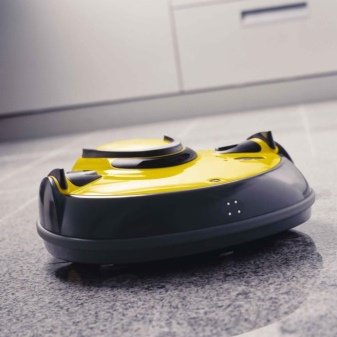

User manual
There are several important recommendations worth paying attention to.
- After unpacking the vacuum cleaner and checking its performance, you need to choose a place in the room to install a parking station. It should be located near the outlet, not interfere with the movement of households and at the same time be in direct line of sight with all corners of the room - otherwise it will not be able to send an IR beam and the robot will either "get lost" or ignore some areas in the process.
- Before starting the robot in cleaning mode (as well as before each automatically scheduled cleaning), you need to remove from the floor all small objects (toys, socks, wires, etc.) that can be sucked into the device. The same applies to rugs that are not attached to the floor and at the same time are fairly light, which can be crumpled in the process of moving the machine over them.
- For high-quality operation and a long service life, regular maintenance of the device is necessary. It consists in the timely replacement of filters and cleaning the brushes from hair adhered to them and other contaminants. When the bag full indicator on the base lights up, it must be replaced with a new one. After replacing 5 bags, it is necessary to replace the filter installed in the parking station.
- If you want to restrict the movement of the robot to a certain room or create an area in which it will not enter, you can install a special restrictive magnetic tape or a low barrier on the floor. Faced with it, the device will continue cleaning in an unlimited part of the space.
- If you, while in the room, do not see the vacuum cleaner for a long time and do not hear the characteristic noise, then most likely it is stuck somewhere. The jam indicator is usually indicated by a red light on the housing. If it blinks, release the vacuum cleaner from its "captivity" and it will continue cleaning in normal mode.



Owner reviews
Most owners of Karcher robotic vacuum cleaners in their reviews note their reliability, as well as the high quality of assembly and materials used for their manufacture. Many people note that autonomous cleaning can significantly save time, and its quality is not only not inferior, but sometimes even surpasses manual cleaning. At the same time, the noise level from a working robot is noticeably lower than when using more powerful hand-held models of vacuum cleaners.
An important advantage of the products of the German company over competitors, the owners consider the presence of a filter, due to which the contamination of the "insides" of the device is reduced.

As a common disadvantage of all devices, their owners note the relatively high cost, as well as the absence of a sound signal when stuck.Pet owners, especially cats and dogs, are often faced with a situation where the pet has a negative attitude towards the appearance of independently moving equipment in the house. He begins to be afraid of the robot or tries to harm him in any way.
Sometimes there are anecdotal situations when, instead of cleaning up animal excrement on the floor, the robot evenly "smears" it on the floor. The authors of the reviews note that in some cases, instead of the stated hour of battery life, the device begins to return to the base for recharging every 20 minutes. This is usually due to either a high degree of pollution in the room, or a malfunction of the battery or charger.
A common disadvantage of the RC 3000 and RC 4000 models is the inability to map the room, which is why the only way to restrict their movement is to install a barrier or magnetic tape, which is not always convenient. Also, both systems cannot be connected to the currently popular “smart home” systems, which limits their integration into automated control systems for household appliances. Finally, unlike the RC 3, both of these models do not come with side brushes.



As a result, many owners note that when cleaning, the vacuum cleaner sometimes leaves an uncleaned strip of dust up to 3 cm wide along the walls and near the furniture legs. In addition, both models do a poor job of cleaning carpets with a pile length of more than 5 cm.
As another disadvantage, which is unique to the RC 3000, many owners note that the device is often entangled in wires lying on the floor or hanging curtains.
In the next video you can see the Karcher RC 3000 in action.













The comment was sent successfully.